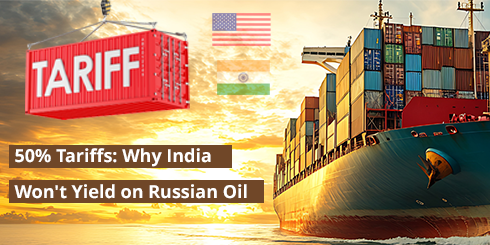Supply Chain Shocks: How to Future-Proof Your Business NOW
By Hiten Shah, President & CEO – MES
If the last few years have taught us anything, it’s that supply chain shocks are no longer rare—they’re routine. From global pandemics and geopolitical tensions to raw material shortages and port congestion, the next disruption isn’t a matter of if—it’s a matter of when. In this final episode of our video series, Hiten Shah, CEO of MES, outlines how businesses can build resilient supply chains that don’t just survive the unexpected, but thrive in it.
A supply chain shock refers to any sudden, unexpected event that disrupts the normal flow of goods and services, upstream or downstream. These shocks can be internal (factory fires, data breaches) or external (natural disasters, policy shifts, pandemics). What makes them dangerous is not just their occurrence, but how unprepared most systems are to handle them. Traditionally, businesses have prioritized lean efficiency—just-in-time delivery, lowest-cost sourcing, and tight production timelines. But as recent events have shown, efficiency without resilience is a recipe
for disruption.
The biggest misconception leaders make is assuming that the next disruption will look like the last one. But the truth is, every shock is different—and unless you’re planning for variability, you’re planning to fail. Hiten explains that the companies who will win in the years ahead are those who treat resilience as a strategy, not a reaction.
He shares that MES has redefined its sourcing and logistics strategies by investing in scenario planning, dual sourcing, and location diversification. This means not relying on a single supplier, region, or distribution path. Instead, resilience means having multiple levers to pull fast. “Flexibility is now a competitive advantage. And supply chain leaders must think like strategists, not firefighters,” Hiten emphasizes. This shift in mindset also means preparing for what Hiten calls dynamic failure modes—failures that occur in new ways under new conditions. If your operations are rigid, it only takes one unexpected event to cause cascading disruption.
It’s also about visibility. If your systems can’t track disruptions in real time, you’re already behind. Visibility in the supply chain means being able to monitor, detect, and respond to risks before they become costly crises. With the rise of supply chain digitization and platforms like SAP or other enterprise solutions, companies now have the ability to track inventory status, supplier performance, and risk exposure globally. But technology alone isn’t the solution. It must be paired with operational readiness and executive alignment. Having the right tools without a resilient mindset is like installing smoke detectors in a building with no fire exits. Awareness without action is still failure.
Hiten also addresses the leadership mindset shift required: moving from cost-cutting to value- building. In uncertain times, lowest-cost sourcing can lead to the highest-risk outcomes. While it may be tempting to optimize for price per unit or reduced labor costs, the real cost of
disruption—from missed delivery windows to customer churn and brand damage—can be far more significant. Resilient companies are those that balance efficiency with responsiveness—and aren’t afraid to invest in strategic agility. “You can’t predict every shock.
But you can build a system that’s ready for any of them.”
To bring this all together, here are some of the future-proofing strategies Hiten outlines in both the blog and the video: scenario planning, modeling best-, worst-, and moderate-case disruptions across critical suppliers and logistics paths; multi-sourcing to avoid single points of
failure; regional diversification to build a geographically balanced sourcing and manufacturing footprint; technology integration for visibility, predictive analytics, and smart alerts; and responsive leadership—embedding supply chain risk management into board-level strategy.
These practices are already part of MES’s operational playbook, and Hiten believes they’ll be the norm for resilient companies in 2025 and beyond.
In the end, building a future-proof supply chain isn’t about predicting the next shock—it’s about building a system that can adapt to any shock. Whether it’s political upheaval, environmental disaster, or another global crisis, the companies that survive and grow will be the ones with the
most responsive, intelligent, and flexible operations. Resilience isn’t just a trend—it’s the new baseline for doing business in a volatile world. And the best time to build it was yesterday. The second-best time? Today.
Watch the full video from Hiten Shah https://vimeo.com/1089152080




